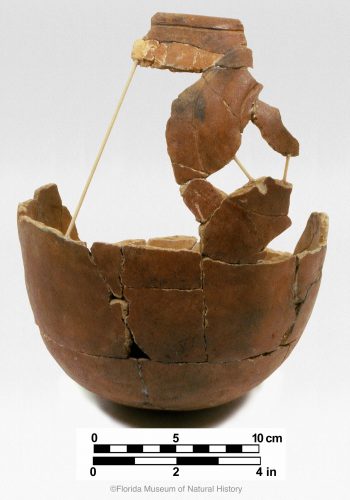Pottery is one of the most common and durable artifacts on archaeological sites throughout the world.
When people make pottery, they make it for specific purposes and in special ways, reflecting their cultures and innovations in technology, function, and style. These qualities make it especially useful as a tool to understand the lives of people in the past. Here are just a few of the topics that archaeologists learn about through pottery: dating, technological change, social learning, social boundaries, kinship, trade and exchange, migration, and demography. Pottery analysis forms a cornerstone of many archaeological research programs.

Researchers in the Ceramic Technology Lab (CTL) conduct analyses on pottery and clay using a variety of techniques. The lab is equipped for basic paste characterization studies, including a binocular microscope for gross identification of inclusion or paste constituents, a petrographic microscope for precise mineral identification in thin section, and an electric furnace used for re-firing experiments and the preparation of clay samples. The lab also has a handheld X-ray fluorescence spectrometer (XRF) for elemental characterization of pottery and other materials. Further analyses, including X-ray diffraction and mass spectrometry, are conducted in collaboration with other research laboratories at the University of Florida and elsewhere.
The CTL maintains three important collections:
Pottery type collection
Pre-Columbian and historic period Indigenous pottery from Florida and the southeastern United States. View examples of these in our Image Galleries.
Comparative clay sample collection
Clay samples from throughout Florida and neighboring areas collected to document geographic variability in clay mineralogy and chemistry.
Thin section library
Comparative “library” of pottery and clay sample thin sections, generated primarily from characterization studies conducted at the CTL.